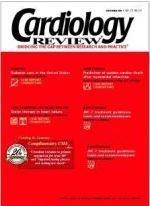Identifying risk of atherothrombotic disease
The article by Emberson and Whincup1 and the accompanying commentary by Goldberg2 correctly point out that the three major risk factors for atherothrombotic disease are cholesterol level, systolic blood pressure, and cigarette smoking. These factors account for at least 75% of all atherothrombotic disease events in the British Regional Heart Study. The purpose of this letter is to show that if one uses dyslipidemia instead of total serum cholesterol level, prediction of the at-risk population is even better, that is, 94%.
The total serum cholesterol level is mainly derived from its major three components: low-density lipoprotein (LDL) cholesterol, high-density lipoprotein (HDL) cholesterol, and very-low-density lipoprotein cholesterol. Total serum cholesterol level may be high because of elevations in any or all of the components. At levels of total serum cholesterol associated with atherothrombotic disease (221 mg/dL in men and 239 mg/dL in women in northwest Ohio), however, most men have a low HDL cholesterol level (≤ 40 mg/dL) and most women have a high LDL cholesterol level
(≥ 170 mg/dL) as the primary component of their dyslipidemia. Clearly, there are men with high LDL cholesterol and women with low HDL cholesterol levels. Use of a ratio between LDL and HDL cholesterol brings these two ends of the dyslipidemic spectrum together.
The Bowling Green Study (BGS) of the Primary and Secondary Prevention of Atherothrombotic Disease produced a global risk factor graph using the cholesterol retention fraction (LDL—HDL/LDL) on the y axis and systolic blood pressure on the x axis (figure). The diagonal line is the angiographic stabilization/regression line, above which lie 85% of the cholesterol retention fraction-systolic blood pressure plots of all patients of all ages who developed some atherothrom-botic disease event in the BGS database. Of those patients who developed atherothrombotic disease despite a cholesterol retention fraction-systolic blood pressure plot below this threshold line, the vast majority were past or current cigarette smokers. That leaves only 6% of the total atherothrombotic disease population that cannot be predicted by cholesterol retention fraction-systolic blood pressure plot above the threshold line and/or cigarette smoking status.3
In a meta-analysis of eight published angiographic regression trials (St. Thomas’ Atherosclerosis Regression study, Heidelberg study, Lipoprotein and Coronary Atherosclerosis study, Pravastatin Limitation of Atherosclerosis in the Coronary Arteries-I, Familial Atherosclerosis Treatment study, Program on Surgical Control of Hyperlipidemia,
National Heart, Lung and Blood Institute Secondary Prevention Trial, and Lopid Coronary Angiography Trial), any therapy that brought the patient’s cholesterol retention fraction-systolic blood pressure plot below the threshold line resulted in angiographic stabilization or reversal of coronary plaque at a minimum average rate of 75%. (Had the Program on Surgical Control of Hyperlipidemia study been structured to control systolic blood pressure, the average rate would have approached 95%.)3 The BGS graph provides a superior means of identifying the population at risk for atherothrombotic disease and guides treatment to maximally stabilize or reverse atherothrombotic disease.
W.E. Feeman, Jr., MD
Bowling Green, Ohio
